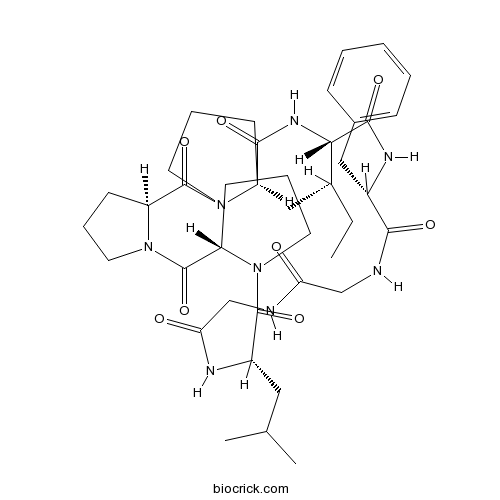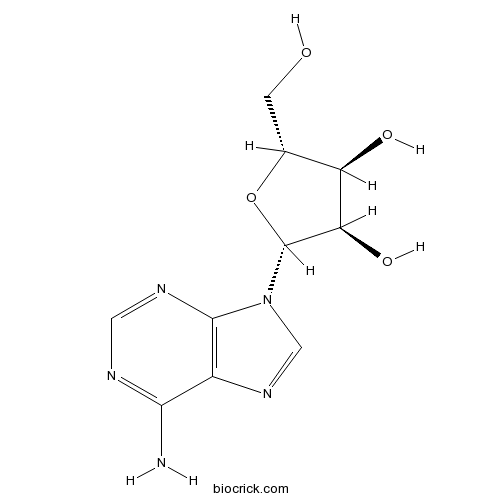Pseudostellaria heterophylla
Pseudostellaria heterophylla
1. The products in our compound library are selected from thousands of unique natural products; 2. It has the characteristics of diverse structure, diverse sources and wide coverage of activities; 3. Provide information on the activity of products from major journals, patents and research reports around the world, providing theoretical direction and research basis for further research and screening; 4. Free combination according to the type, source, target and disease of natural product; 5. The compound powder is placed in a covered tube and then discharged into a 10 x 10 cryostat; 6. Transport in ice pack or dry ice pack. Please store it at -20 °C as soon as possible after receiving the product, and use it as soon as possible after opening.
Natural products/compounds from Pseudostellaria heterophylla
- Cat.No. Product Name CAS Number COA
-
BCN2768
Heterophyllin B145459-19-4
Instructions

-
BCN5560
Acacetin480-44-4
Instructions

-
BCN5796
Adenosine58-61-7
Instructions

[Cloning and expression analysis on full length CDS of zeaxanthin epoxidase gene in Pseudostellaria heterophylla].[Pubmed: 28959835]
Zeaxanthin epoxidase plays an important role in indirect pathway of plant abscisic acid biosynthesis. According to the data of Pseudostellaria heterophylla transcriptome, zeaxanthin epoxidase gene was isolated and named as PhZEP. The results of bioinformatics analysis showed that the coding sequence of PhZEP was 1 263 bp long and encoded 420 amino acids. The putative protein molecular weight was 47.34 kDa and its theoretical isoelectric point was 6.64. The characteristic structure domains were predicted, including binding site of lipoprotein and flavoprotein monooxyenase. A signal peptide was discovered at the N-terminal of amino acids. The Real-time PCR revealed that PhZEP had a higher expression level in leaves than other tissues of P.heterophylla. Highly expressed PhZEP was also observed at 10 d and 40 d tuberous root after flowering. PhZEP presented a different expression after treatment with ABA, fluridone and ABA +fluridone compared to the control. The expression of PhZEP in tuberous root after ABA treatment was close to that in control group, while PhZEP showed significant up-regulation in the fluridone treatment group. In this study, the PhZEP gene from P. heterophylla was cloned and this result has important significance for its functional identification. This research provides a basis for the further analysis on functional mechanism of ABA during development of P. heterophylla.
Transcriptome analysis of Pseudostellaria heterophylla in response to the infection of pathogenic Fusarium oxysporum.[Pubmed: 28923015]
Pseudostellaria heterophylla (P. heterophylla), a herbaceous perennial, belongs to Caryophyllaceae family and is one of the Chinese herbal medicine with high pharmacodynamic value. It can be used to treat the spleen deficiency, anorexia, weakness after illness and spontaneous perspiration symptoms. Our previous study found that consecutive monoculture of Pseudostellaria heterophylla could lead to the deterioration of the rhizosphere microenvironment. The specialized forms of pathogenic fungus Fusarium oxysporum f.Sp. heterophylla (F. oxysporum) in rhizosphere soils of P. heterophylla plays an important role in the consecutive monoculture of P. heterophylla.
[Oligopeptides in plant medicines cited in Chinese Pharmacopoeia].[Pubmed: 28920330]
In total, 23 plant plant medicined containing oligopeptides were cited in Chinese Pharmacopoeia (1 part) of 2015 version including Rubia cordifolia, Linum usitatissimum, Aster tataricus, Psammosilene tunicoides, Pseudostellaria heterophylla, Stellaria dichotoma, Vaccaria segetalis, Dianthus superbus, Celosia argentea, Lycii Cortex, Citrus medica, C. aurantium, Panax ginseng, Parmx notoginseng, Schisandra chinensis, Sparganium stoloniferum, Euryale ferox, Ophiopogon japonicas, Pinellia ternate, Achyranthes bidentata, Physalis alkekengi, Polygonatum odoratum, and Leonuri Fructus. There were 187 oligopeptides in plant medicines above as reported. Oligopeptides consisted mainly of linear peptides and cyclic peptides. The linear peptides included dipeptides, tripeptides and pentapeptides, and cyclic peptides included cyclic, bicyclic and tricyclic peptides. The number of residues of single cyclic peptides ranged from two to twelve. Bicyclic peptides were isolated mainly from R. cordifolia and C. argentea. Modern pharmacological study showed that oligopeptides had many pharmacological effects, including antitumor, anticoagulant, antibacterial, immune suppression and so on.
Structure of a pectic polysaccharide from Pseudostellaria heterophylla and stimulating insulin secretion of INS-1 cell and distributing in rats by oral.[Pubmed: 28797815]
None
Correction: De Novo Sequencing and Assembly Analysis of the Pseudostellaria heterophylla Transcriptome.[Pubmed: 28060914]
[This corrects the article DOI: 10.1371/journal.pone.0164235.].
Immunomodulatory effects of Pseudostellaria heterophylla (Miquel) Pax on regulation of Th1/Th2 levels in mice with atopic dermatitis.[Pubmed: 28035398]
Pseudostellaria heterophylla (PH) has various pharmacological effects that include immunologic enhancement and anti‑oxidation. However, it remains unclear whether PH exerts beneficial effects in dermatological diseases. The present study examined the effects of PH on a 2,4-dinitrochlorobenzene (DNCB)‑induced atopic dermatitis (AD) mouse model and elucidated its underlying mechanism of action. PH extract (1 and 100 mg/ml) was applied topically to DNCB-treated dorsal skin of mice every day for 11 days. The immunomodulatory effects of PH were evaluated by measuring skin thickness, mast cell infiltration, serum levels of immunoglobulin E (IgE), and mRNA expression levels of T helper (h)1/Th2 and pro‑inflammatory cytokines in dorsal skin. In addition, cluster of differentiation (CD)4+ T cells were detected in dorsal skin by immunohistochemistry. Topical application of PH significantly reduced the thickness of dermis, epidermis and serum IgE production compared with the DNCB group. PH treatment inhibited infiltration of inflammatory cells, including mast cells and CD4+ T cells, and suppressed the mRNA expression levels of cytokines (interferon‑γ, interleukin‑4, ‑6, ‑8 and ‑1β, and tumor necrosis factor‑α) associated with the immune response. Furthermore, PH treatment significantly downregulated the protein expression levels of nuclear factor‑κB, phosphorylated inhibitor of κBα and mitogen‑activated protein kinases. The results suggested that PH may be a potential therapeutic strategy for the treatment of AD via the modulation of Th1 and Th2 levels.
[Effects of different amendments on contents of phenolic acids and specific microbes in rhizosphere of Pseudostellaria heterophylla.][Pubmed: 29696861]
None
De Novo Sequencing and Assembly Analysis of the Pseudostellaria heterophylla Transcriptome.[Pubmed: 27764127]
Pseudostellaria heterophylla (Miq.) Pax is a mild tonic herb widely cultivated in the Southern part of China. The tuberous roots of P. heterophylla accumulate high levels of secondary metabolism products of medicinal value such as saponins, flavonoids, and isoquinoline alkaloids. Despite numerous studies on the pharmacological importance and purification of these compounds in P. heterophylla, their biosynthesis is not well understood. In the present study, we used Illumina HiSeq 4000 sequencing platform to sequence the RNA from flowers, leaves, stem, root cortex and xylem tissues of P. heterophylla. We obtained 616,413,316 clean reads that we assembled into 127, 334 unique sequences with an N50 length of 951 bp. Among these unigenes, 53,184 unigenes (41.76%) were annotated in a public database and 39, 795 unigenes were assigned to 356 KEGG pathways; 23,714 unigenes (8.82%) had high homology with the genes from Beta vulgaris. We discovered 32, 095 DEGs in different tissues and performed GO and KEGG enrichment analysis. The most enriched KEGG pathway of secondary metabolism showed up-regulated expression in tuberous roots as compared with the ground parts of P. heterophylla. Moreover, we identified 72 candidate genes involved in triterpenoids saponins biosynthesis in P. heterophylla. The expression profiles of 11 candidate unigenes were analyzed by quantitative real-time PCR (RT-qPCR). Our study established a global transcriptome database of P. heterophylla for gene identification and regulation. We also identified the candidate unigenes involved in triterpenoids saponins biosynthesis. Our results provide an invaluable resource for the secondary metabolites and physiological processes in different tissues of P. heterophylla.


